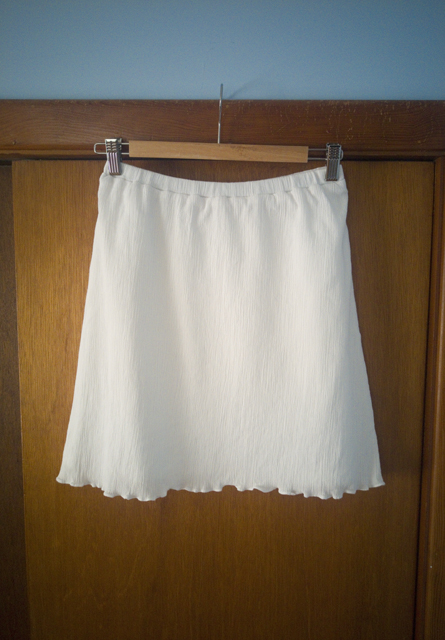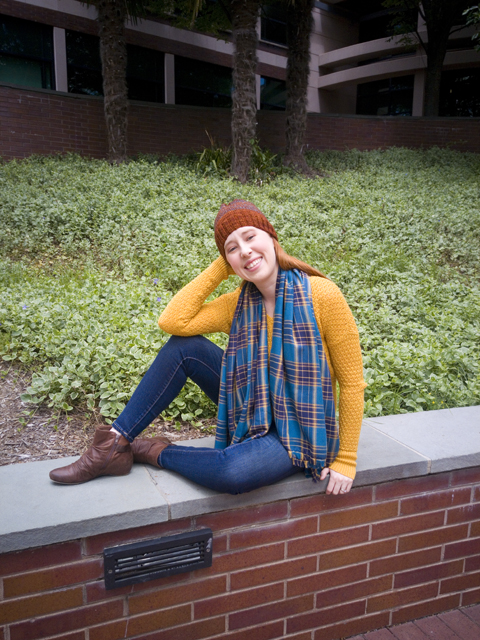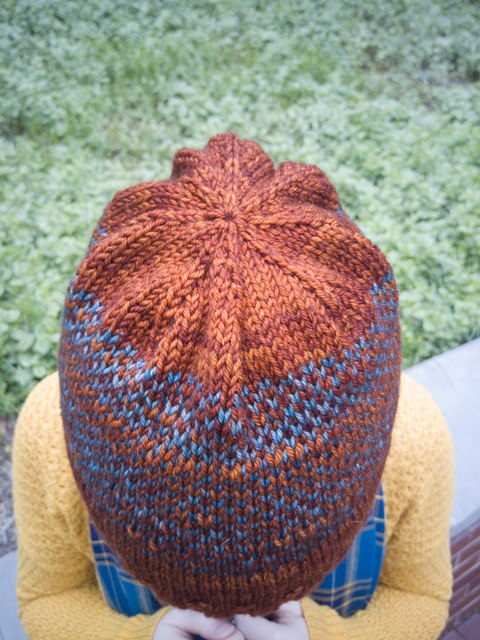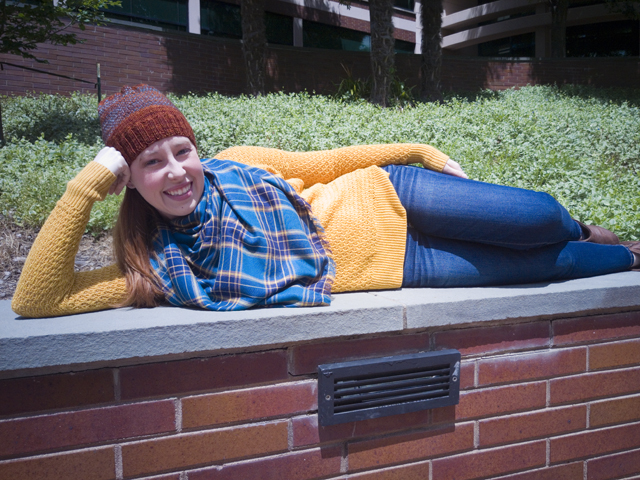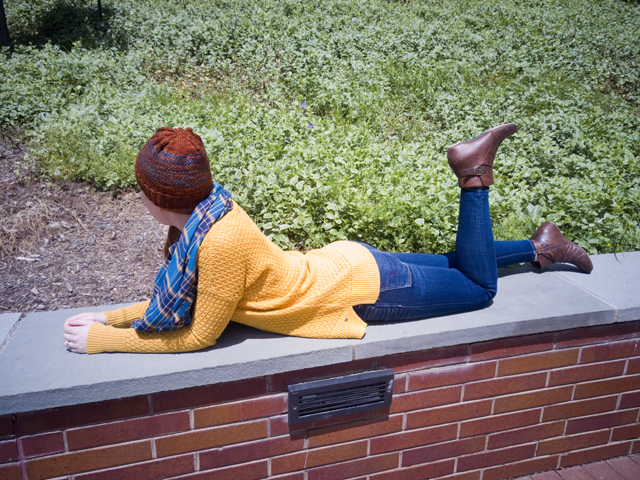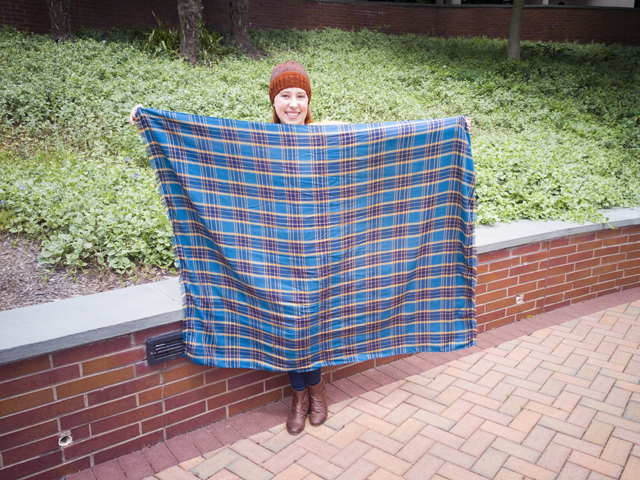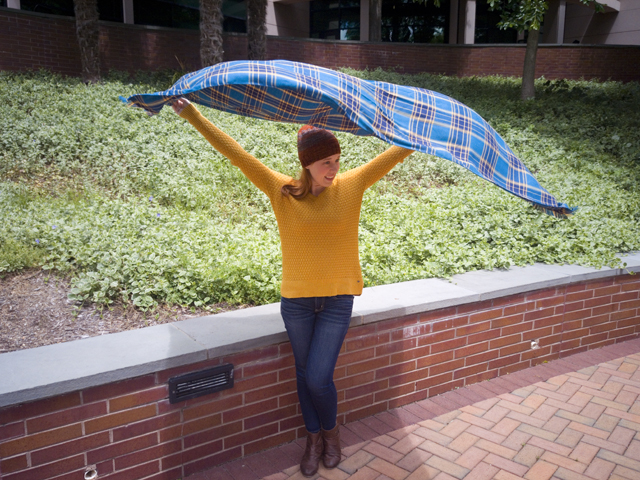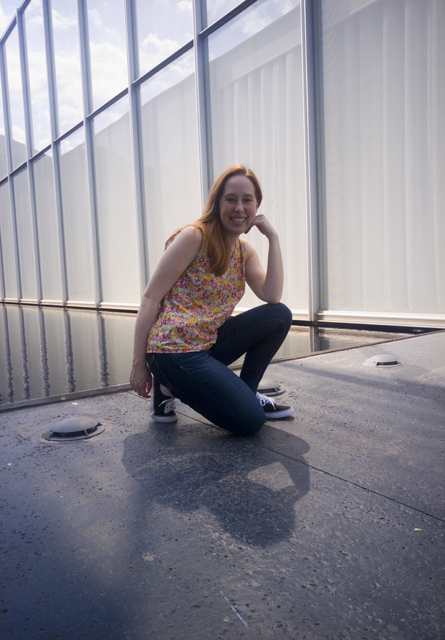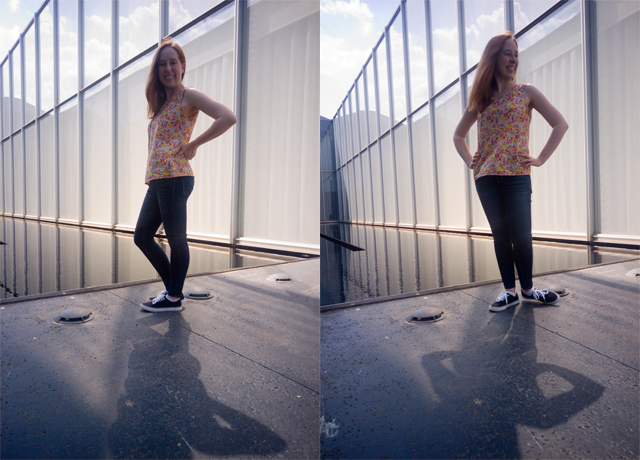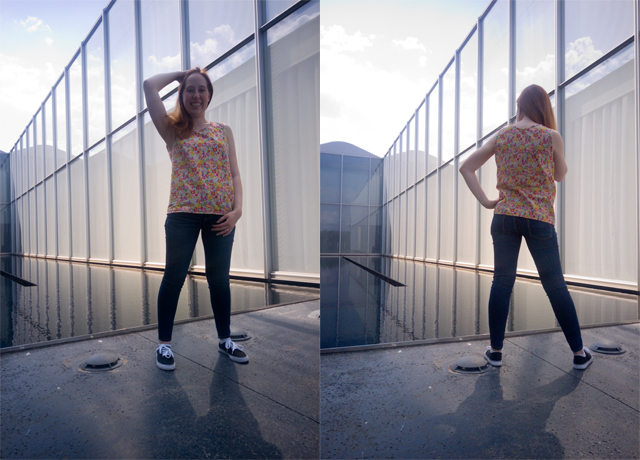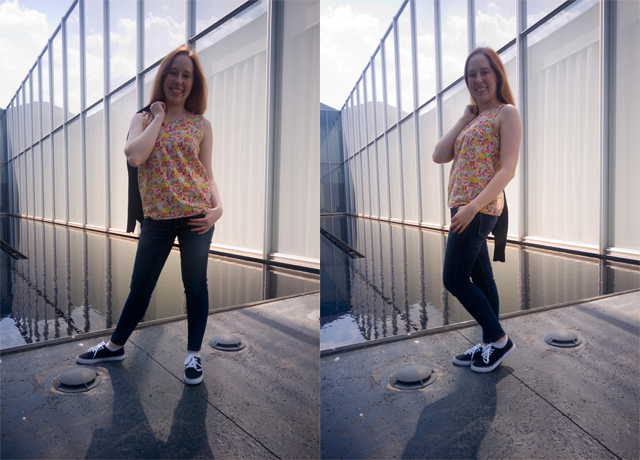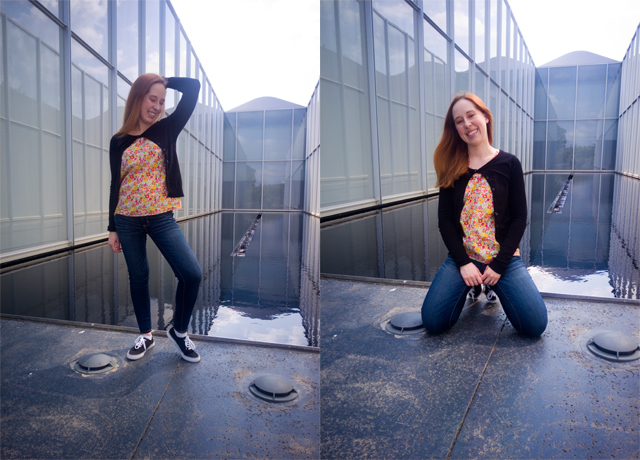Before I post my (overdue) reflections on Me-Made-May, I wanted to catch up my records by sharing the projects I completed during the month. The first is below; the others will be combined in another post.
When I was a teenager my parents paid for my clothing, and because they allowed me a fair amount of latitude in picking out what I wanted to wear, I didn’t have much impetus to buy clothing myself. The first time I can distinctly recall paying for a garment that I wanted with my own money was in high school. I don’t remember now what I’d originally gone to the mall to buy—I wasn’t the type to shop recreationally—but I ended up bringing home a white cotton gauze A-line skirt that had been on sale for only $10. It hit around knee-length and had an elastic waist and slightly stretchy lining, all of which made it wonderfully comfortable and allowed me to sit crossed legged without flashing anyone. From a design standpoint it was nothing special, but in my eyes it was pretty much perfect, and I adored it.
I wore the skirt through high school and then college; I don’t remember the exact reason that I eventually got rid of it, but the only reason I would have parted with it was that a) it had acquired an indelible stain, or b) it had completely fallen apart from endless wearing and washing. I’ve wanted to replace it ever since, but somehow never mustered up the gumption to actually do so.
As the weather warmed up throughout May, however, I finally pulled out a crinkled poly-cotton I scored at Hancock’s going-out-of-business sale and Simplicity 1662 and set to work.
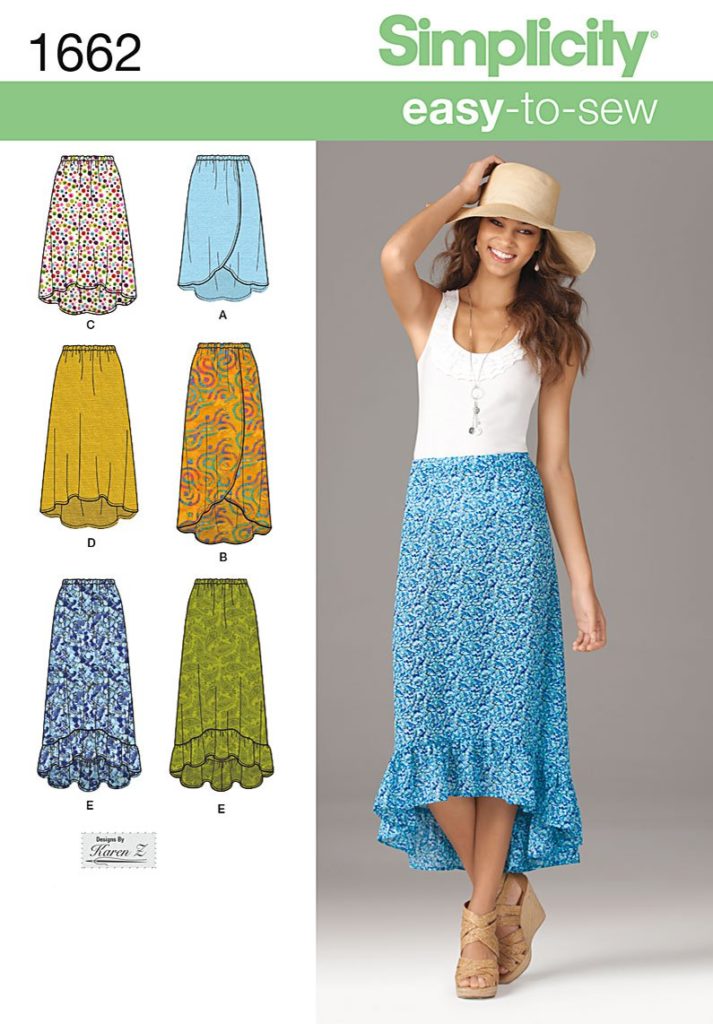
This pattern doesn’t really mimic the shape of the inspiration skirt that well, nor is it a great match for the fabric, but I had it in stash already and it has an elastic waist—arguably my favorite feature of the original—so I went with it to avoid the perils of trying draft something myself. (I know that an A-line skirt should be about the easiest thing to draft after a dirndl or a circle skirt, but I have an exceptional ability to over-complicate the drafting process, so I decided not to chance it. I wanted something easy.)
I traced view C, but rather than have it rise in the front and dip in the back, I cut it straight across at the side seam, perpendicular to the center front/center back. I cut a size small based on my waist measurement, with the intention of stretching it to sit at the top of my hip bones.
I prepped the fabric by washing it in cold water and tumbling dry on low heat, which caused its already crinkly surface to pull in even further, making it much too narrow for the pattern pieces. After consulting a few discussion threads online, the only advice I could find was to relax the fabric with steam. I was dubious—wouldn’t it ruin the very thing about the fabric that attracted me to it in the first place?—but after aggressively steaming the yardage and even gently tugging/prodding it until the selvages were straight again, it was wide enough to use and still had those characteristic crinkles, albeit less deeply furrowed. Like the gauze of the original, this fabric is sheer when the light hits it, so I decided to line the skirt with leftover white cotton sateen I had in stash from lining my Garden Party Dress.
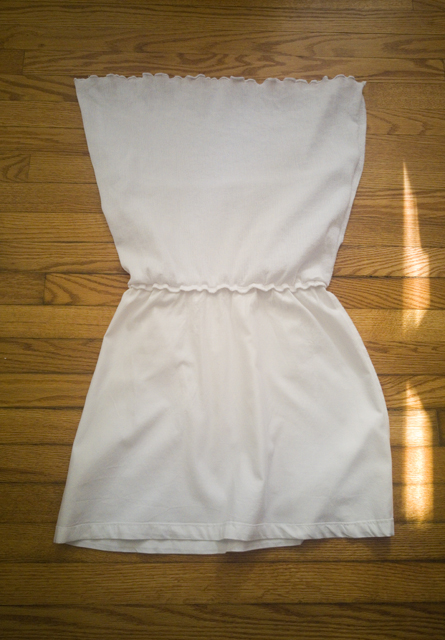
I attached the lining by serging it to the shell and the waistband, simultaneously securing the lining, creating the casing for the elastic, and finishing the edge. The serging is invisible because it ends up sandwiched between the shell and lining when everything is turned right-sides-out.
After the success of my super simple tartan scarf, I decided to finish the skirt hem with my rolled hem foot. The act of pulling the stretchy material taut to feed it through the foot led to the lettuce edging, which I should have expected but ended up pleasantly surprised by. It will take a little practice to achieve a consistently ruffled edge, but I’m happy with the outcome.
The lining was turned up 3/4″, then turned up again 1″ and edgestitched, for a deep hem and a clean finish.
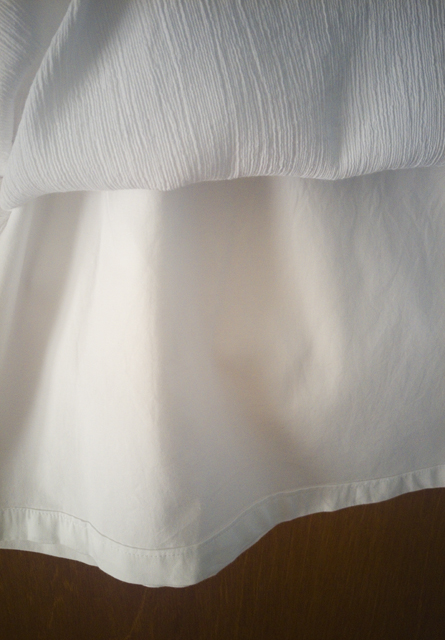
For the elastic waist, I ended up changing the length of the elastic to get a snug fit, but I forgot to write down by how much. Whoops. I did follow the tip included in the instructions to use little strips of fusible interfacing to glue down the side seam allowances within the waistband, to make it easier to thread the elastic through the casing, and it worked a treat.
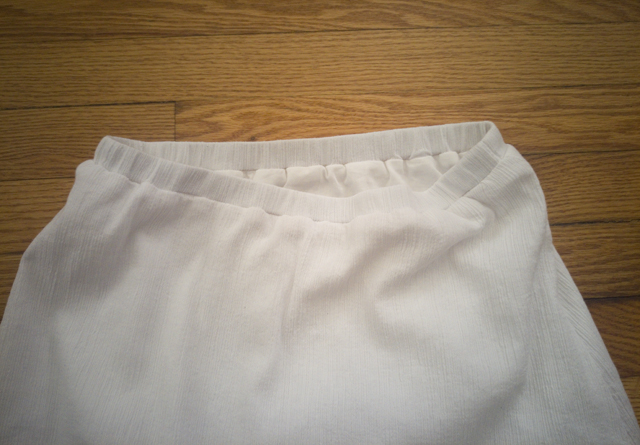
At this point, you may well be wondering why there are no modeled shots, especially given the attention to detail in both the sewing and the posting. The truth is, after wearing it one time for Me-Made-May, I realized that something is wrong with the waist. Instead of lying smoothly when stretched the way its predecessor did, it has this weird puffiness right below the elastic that stubbornly refuses flatten out. Maybe it’s because the fabric is slightly gathered, or maybe it just has more body than my beloved older skirt did, but in any case, it looks horrible under the fitted and semi-fitted shirts I prefer. Maybe it would look okay under a boxy, drapy tee, but that’s not a combination I see myself wearing. So it’s probably destined for the donation pile, in the hopes that someone else will love it when I can’t, and I’m back to the drawing board for the perfect summer skirt.
What’s your perfect summer skirt look like? Is it something you own already, or are you still on the hunt for it?

